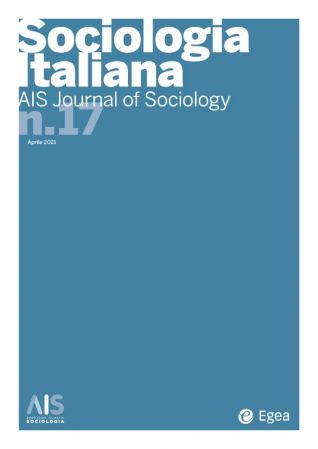AIS
2021/17
«Incantati» dal «disincanto». Riflessioni sociologiche sull’immaginario dell’invisibile e della trascendenza («Enchanted» by «disenchantment». Sociological reflections on the imaginary of the invisible and transcendence), di Antonio Camorrino
La riflessione weberiana sul «disincanto del mondo» rappresenta una delle maggiori concettualizzazioni della teoria sociologica. Essa costituisce uno strumento indispensabile nella cassetta degli attrezzi di ogni studioso di scienze sociali. In grado di sintetizzare, con una formulazione puntuale ed evocativa, i processi di trasformazione sociale che hanno interessato la modernità, questa teorizzazione deve oggi confrontarsi con fenomeni che, invece, aprono a un «reincanto del mondo». Se l’immaginario della modernità sembrava aver interrotto le comunicazioni con l’invisibile, la trascendenza e le emozioni, quello della postmodernità – nella lettura di Michel Maffesoli, ad esempio – pare invece fondarsi su un primato di questi elementi. Obiettivo del presente paper è analizzare gli aspetti principali che caratterizzano i fenomeni del «disincanto» e del «reincanto» del mondo, focalizzando l’attenzione sulle trasformazioni che hanno interessato la relazione sociale con l’invisibile e con la trascendenza.
Weber’s reflection on the «disenchantment of the world» is one of the major conceptualizations of sociological theory. It is an indispensable tool for any social scientist. Able to summarize, with a precise and evocative formulation, the processes of social transformation that have affected modernity, this theorization today has to deal with phenomena which open up a possible «re-enchantment of the world». If the imagery of modernity seemed to have interrupted communications with the invisible, transcendence and emotions, that of postmodernity – in the reading of Michel Maffesoli, for example – seems to be based on the primacy of these elements. The aim of this paper is to analyse the main aspects that characterize the phenomena of the «disenchantment» and «re-enchantment» of the world, with an especial focus on the transformations that have affected the social relationship with the invisible and with transcendence.
Keywords: disincanto, reincanto, invisibile, trascendenza, sacro, disenchantment, re-enchantment, imagery, invisible, transcendence
DOI: DOI: 10.1485/2281-2652-202117-11
Pagine 239-253
L'ACCESSO A QUESTO CONTENUTO E' RISERVATO AGLI UTENTI ABBONATI
Sei abbonato? Esegui l'accesso oppure abbonati.
